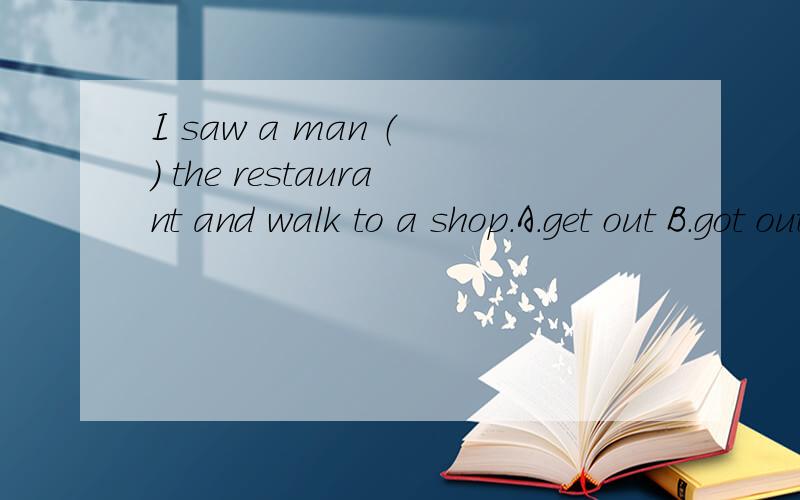I saw a man ( ) the restaurant and walk to a shop.A.get out B.got out of C.get out ofD.got out为什么不选B
来源:学生作业帮助网 编辑:作业帮 时间:2024/05/13 02:23:38

I saw a man ( ) the restaurant and walk to a shop.A.get out B.got out of C.get out ofD.got out为什么不选B
I saw a man ( ) the restaurant and walk to a shop.
A.get out B.got out of C.get out of
D.got out
为什么不选B
I saw a man ( ) the restaurant and walk to a shop.A.get out B.got out of C.get out ofD.got out为什么不选B
see sb. do sth.
C.get out of
选择C;
固定句型:see sb do sth:看见某人做某事;
上面说的对
see sb 后边只能跟do 或是doing
“see sb do sth ”表示看到某人做某事了,强调看见谁做过什么事。
如:I saw her clean the classroom.
是说我看到她打扫教室了。(强调做过这件事)
而在我们的文中用的是:“see sb doing sth ”
表示看到某人正在做某事强调“看见某人正在做某事”
如:...
全部展开
see sb 后边只能跟do 或是doing
“see sb do sth ”表示看到某人做某事了,强调看见谁做过什么事。
如:I saw her clean the classroom.
是说我看到她打扫教室了。(强调做过这件事)
而在我们的文中用的是:“see sb doing sth ”
表示看到某人正在做某事强调“看见某人正在做某事”
如:I saw her cleaning the classroom.
我看到她正在扫打教室(强调正在做某事)
像see 这样的感官动词还有hear , feel , watch , notice (注意到)都可以跟do 或doing分别表不同的意思
如:I heard him play the piano.
我听到他弹钢琴了。
I heard him playing the piano.
我听到他正在弹钢琴。
收起
选A
首先确定用短语get out(离开的意思),get out of 是逃避、避免的意思
再看下文and后的动词用原形,and连接的并列句语法时态一致,所以在这里要用get out